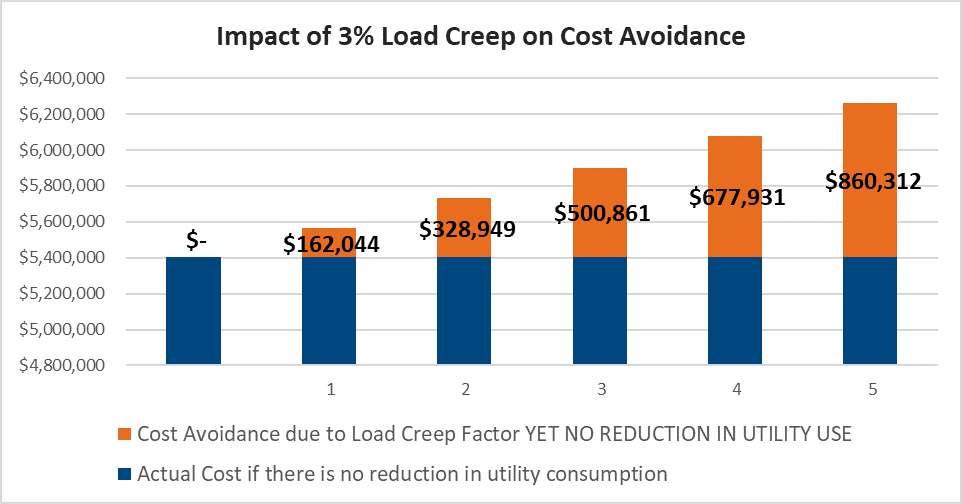
Load creep describes a gradual increase in electrical use resulting from small devices that plug into an electrical outlet. Some of these can include:
- Phone chargers
- Desktop computers
- Space heaters
- Microwaves
- Toasters
- Small refrigerators
Load creep can also refer to the decrease in a building’s overall energy efficiency due to aging. For example:
- HVAC unit that is 25 years old runs less efficiently than a unit that is 1 year old
- A roof leaks as it gets older
- Windows and doors let drafts in over time
Load creep is often assigned a “load creep factor” expressed as a percentage of actual energy use. Load creep matters because it can be used to artificially inflate energy savings after an energy savings program is implemented. Building owners should be wary of guaranteed energy savings contracts that include load creep.
How does it impact energy savings results?
Energy savings are calculated by taking the baseline year’s energy use and subtracting the current year’s energy use. Each year, the load creep factor is added to the baseline year’s energy use. This makes it seem like the annual energy savings are much greater than they actually are.
Performance Services has analyzed the historical energy use of hundreds of school buildings and has not been able to identify the existence of load creep. We cannot take credit for any energy savings related to load creep because load creep does not exist. Additionally, using a load creep factor only benefits the vendor or energy savings program provider. Using load creep makes it less likely that a vendor will fail to achieve the savings they promised to the client.
The following chart details the significant impact that just a 3% load creep factor would have on the reported energy savings for a school district. By using a 3% load creep factor applied to the actual base year energy cost, an energy conservation program provider would report over $2.5M in cost avoidance without ever reducing actual energy use!

How do we deliver guaranteed energy savings?
Performance Services’ Energy Leadership Program is built so that there is a significant reduction of current and raw energy use. All projected energy savings are based on real energy use reductions and do not include any baseline inflation factors such as load creep.
Performance Services does recognize the impact of plug load—often used to justify the inclusion of load creep—on the overall energy performance of a building. Therefore, we include strategies to reduce energy consumed by the plug loads in our Energy Leadership Program. During the implementation phase, our team identifies all plug loads within each building. It’s our objective to provide a professional services agreement at a reasonable and affordable cost and put as much money as possible back into our customer’s general fund.




